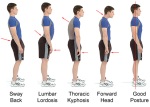MOVEMENT is the Key
June 14, 2011 Leave a comment
MOVEMENT
Good movement is required for proper function of every system in our body, from muscles and joints, to digestion and circulation.
The body is made up of the same parts in everyone. The same bones, the same muscles, the same ligaments, the same organs, nerves and blood vessels. There are some shape and size variations between people, but in general, we are all made the same. Which is how, when we look at someone, we recognize them as a human, and not a dog, a turtle or a tree.
From that basic differntiation, we get to looking at how people move these virtually identical collections of bones, muscles and ligaments etc. …The variations we find are on an amazingly wide spectrum.
move these virtually identical collections of bones, muscles and ligaments etc. …The variations we find are on an amazingly wide spectrum.
How can that be? The answer is that some people are moving in the most efficient, least taxing and least strenuous way possible (which is ideal). Everyone else is moving in a less functional, more inefficient, higher stress- inducing, type of pattern.
These less-than-ideal patterns arise from compensations that we make for lack  of mobility or excessive mobility that occurs in other areas, or from a disconnect between our nervous and muscular systems.
of mobility or excessive mobility that occurs in other areas, or from a disconnect between our nervous and muscular systems.
How do these changes in ideal mobility, or this disconnection between systems occur? Through injury.
Injury needs to be defined in this sense. Any undue stress on the body resulting in damage at the micro or macro level. There comes a point where the damage done is irreparable outside of surgery. Even with “successful” surgery, the body will have to make compensations. When this occurs, the role of treatment is minimizing the impact of those compensations. When injuries are less severe, manual therapy and muscle strengthening protocols can be applied to get the movements back as close as possible to ideal.
How do you know if you have one of these compensations, or less-than-ideal movement patterns?
Pain is a great indicator, but does not always point directly to the cause of the problem.
Have your movement assessed by a trained professional. They should be able to identify any dysfunctional patterns and advise you on treatment or self-care options.
If a dysfunctional pattern exists, it is an indication that undue stress is being put into our system, and if not corrected, will inevitably lead to pain.
A movement pattern analysis system such as the SFMA can be a remarkable tool for tracking down the underlying cause of movement dysfunctional.
It is a tool that a trained clinician can use, to track down the underlying problems that are causing you to move inefficiently.
Stay tuned for a further description of the SFMA and how getting your movement checked can lead to less pain and improved performance.